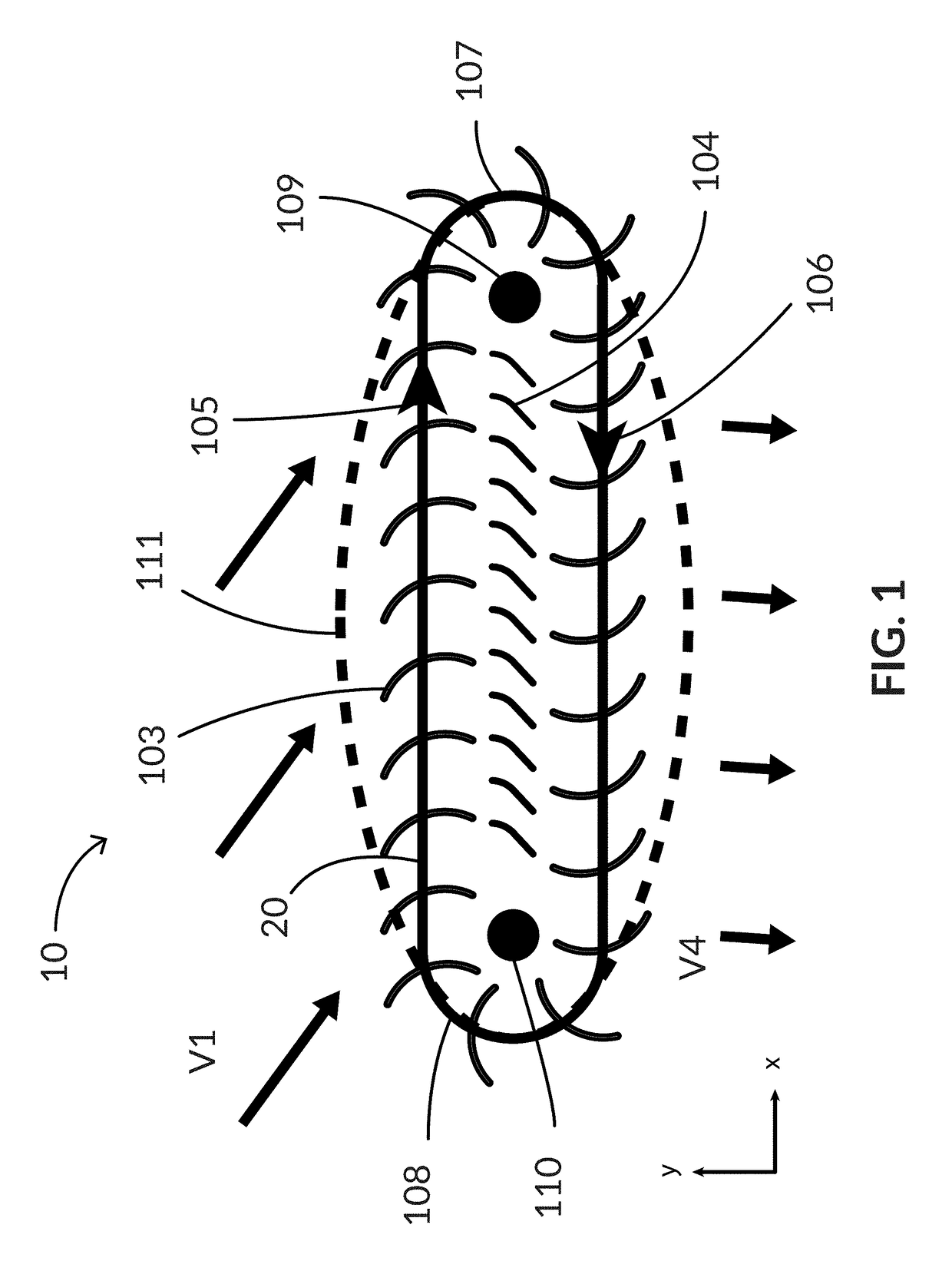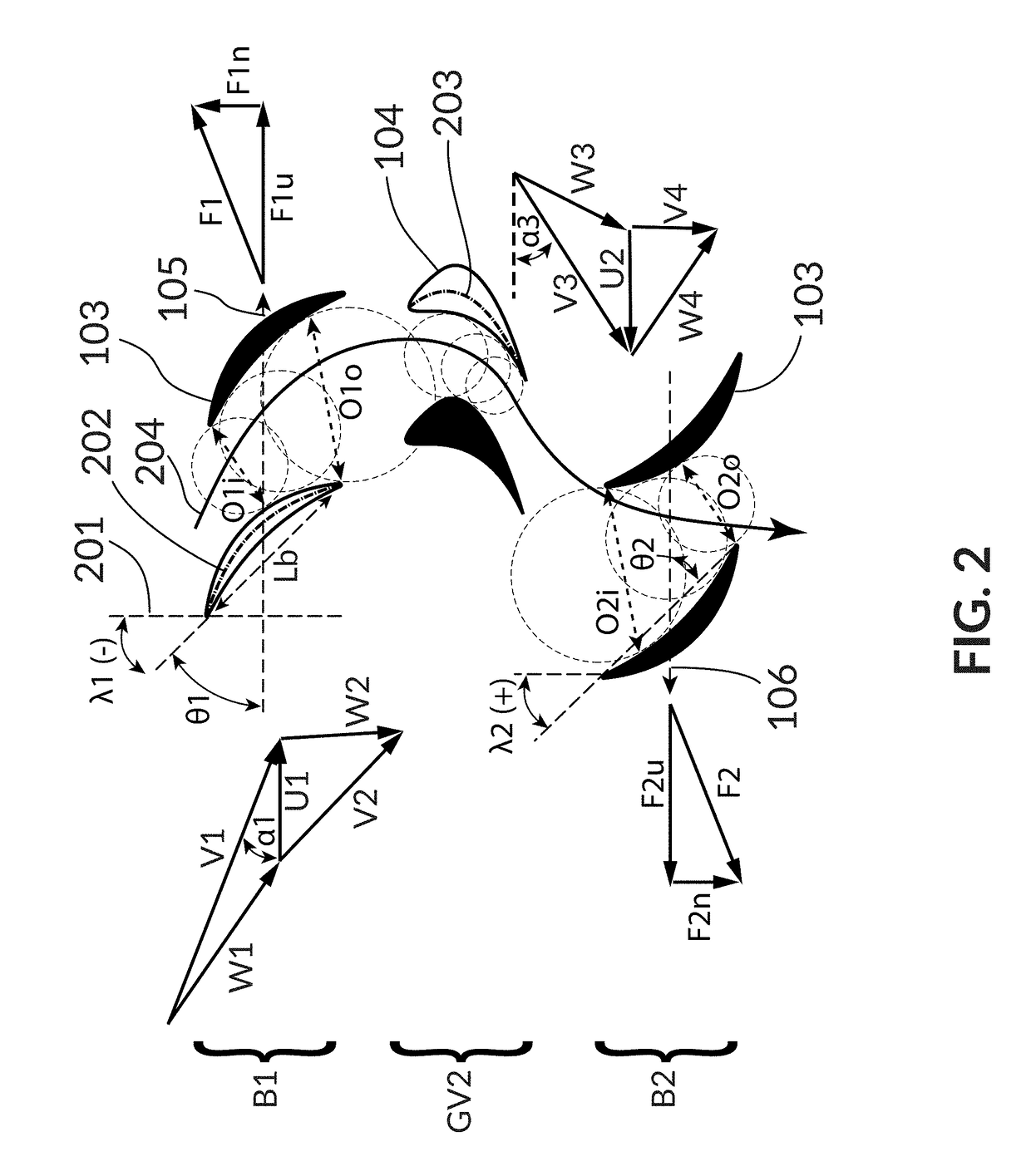Hydraulic turbine
a technology of hydropower turbines and turbines, applied in the direction of impulsive engines, machines/engines, sea energy generation, etc., can solve the problems of increased losses, increased surge load, and increased surge load, and achieve the effects of improving specific speed, efficiency, and design freedom
- Summary
- Abstract
- Description
- Claims
- Application Information
AI Technical Summary
Benefits of technology
Problems solved by technology
Method used
Image
Examples
Embodiment Construction
[0138]As shown in FIG. 1, a turbine 10 can include a first axis 109 and a second axis 110. First axis 109 and second axis 110 can be parallel. First axis 109 and second axis 110 can be spaced along a horizontal direction. In another aspect, first axis 109 and second axis 110 can be spaced along a vertical direction. In another aspect, first axis 109 and second axis 110 can be spaced along a plane at some angle relative to horizontal, between horizontal and vertical.
[0139]The turbine 10 can include blades 103 that can move in a path consisting of multiple segments between and around first axis 109 and second axis 110. For example, blades 103 can move through a first segment 105 from second axis 110 toward first axis 109, a second segment 107 around first axis 109, a third segment 106 from first axis 109 toward second axis 110, and a fourth segment 108 around second axis 110. After fourth segment 108, blades 103 can re-enter first segment 105. First segment 105 and third segment 106 c...
PUM
 Login to View More
Login to View More Abstract
Description
Claims
Application Information
 Login to View More
Login to View More - R&D
- Intellectual Property
- Life Sciences
- Materials
- Tech Scout
- Unparalleled Data Quality
- Higher Quality Content
- 60% Fewer Hallucinations
Browse by: Latest US Patents, China's latest patents, Technical Efficacy Thesaurus, Application Domain, Technology Topic, Popular Technical Reports.
© 2025 PatSnap. All rights reserved.Legal|Privacy policy|Modern Slavery Act Transparency Statement|Sitemap|About US| Contact US: help@patsnap.com



